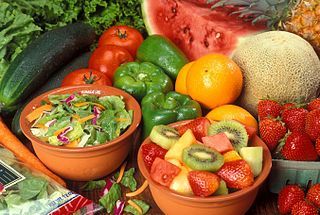Energy, Water and Land Use in Growing Our Food

….the average American burns 2 gallons of gasoline (72 kWh) per day in transportation. The production and distribution of is ~88% efficient, so this works out to ~82 kWh worth of energy required to transport us around. We Americans used ~35 kWh/day of electricity between home, work, and leisure. The average fossil electricity on the grid is ~34% efficient, so this works out to ~103 kWh worth of energy to satisfy our lifestyle. We eat ~3 kWh, we drive ~82 kWh, and we live, work and play in ~103 kWh… Yes eating meat is more energy intensive than eating salad, and yes animals fart… but in the grand scheme of things this is NOT the bigger issue.
Glenn appears to be comparing the energy intensiveness of our food with that of our transportation. I don’t see the validity of this comparison, and point to this analysis of the resources (energy, water and land use) required to grow beef vs. vegetables. In summary, growing a calorie of beef takes 20 – 25 times more fossil energy, 200 times more water, and about 9 times more land than growing a calorie of vegetables.

Which should bring us to the main point…. meat isn’t the main obstacle to halting climate change, it’s one of many, and we need to tackle them ALL
Craig,
I’ve seen those studies for years. Nearly all of them reference the same root study from 2006 which was put forward by some militant vegetarians… People – such as yourself – who are concerned about climate change then referenced that study, but very few have gone on to do independent studies of their own, and most of the funding for such studies come from groups like PETA (meat doesn’t really need bogus studies to advertise, so they don’t bother paying for bogus studies to counter the PETA crap).
First, I will state that ruminants have a lot of waste methane, so that’s an issue. It can be largely averted by harvesting manure for energy, but that business model cannot compete in today’s world of cheap gas… so it is fair to say that beef and lamb might result in 2-3 times as much emissions as chicken.
Also for all livestock (chickens, beef, pigs, etc…) there is considerable waste in slaughterhouse leavings – the discarded animal parts. In 2006 this was universally wasted, now it is nearly universally utilized by conversion to biodiesel and/or anaerobically digested into biogas.
However, the biggest deliberate manipulation is comparing the energy inputs into dried grains and the energy inputs into meat-for-sale. Why is that important? Because if you buy a boneless/skinless chicken breast and plop it into the Foreman Grill, you’ll cook it for 5 minutes or so and be done. If you buy a bag of dried beans, you’ll put them in a pot of near-boiling water for 6 hours before you can begin to season them.
We pre-digest nearly all food we take in. If we didn’t, we would need 12-15 kWh/day of food instead of ~2-3. For meat, the animal pre-digests the energy for us, and little additional preparation is required. For grains, there’s a tremendous amount of energy that must be utilized to break the fibers before we can gain net positive energy in the act of digestion.
The end result is a wash. Farmed tilapia is by a large probably the most environmentally efficient food overall (so just eat locally farmed tilapia for all meals?), while lamb is probably the worst. Chicken is likely better for the planet than most forms of processed grains (bread, pasta, slow-cooked beans), and tofu may be nearly as bad as beef… but all told the difference in choosing one type of food over another represents a very small difference in terms of our total carbon footprint. There are far more significant changes that can be made with respect to our electricity usage and our driving habits, and these should be the focus of our activism.
I certainly haven’t done any independent analysis, but these studies strike me as credible, based on simple thermodynamics and biology. We have the process of a cow’s consuming a calorie of energy from grass, and transforming that into chemical energy in its muscles. How efficient could that process possibly be?
Craig,
They are credible, in the sense that they are correct. But they are biased in the sense that they are incomplete.
The most glaring omission in the study is the energy consumption in food preparation. You do not, and cannot, eat a bag of dried beans, or a bushel of wheat seeds… the food has to be extensively processed and/or prepared. The study includes all stages of meat preparation up until arriving at the store in a cellophane wrapper – which means you need a few minutes of cooking and you’re done.
Compare that to the amount needed to cook beans, or grind wheat to flour and bake bread… and you have far far more energy required in meal preparation/calorie than you would need for the meat portion of the meal. That food prep takes energy and results in emissions. That part was omitted from the study, reflecting bias.
Wow. Very interesting. Thanks.